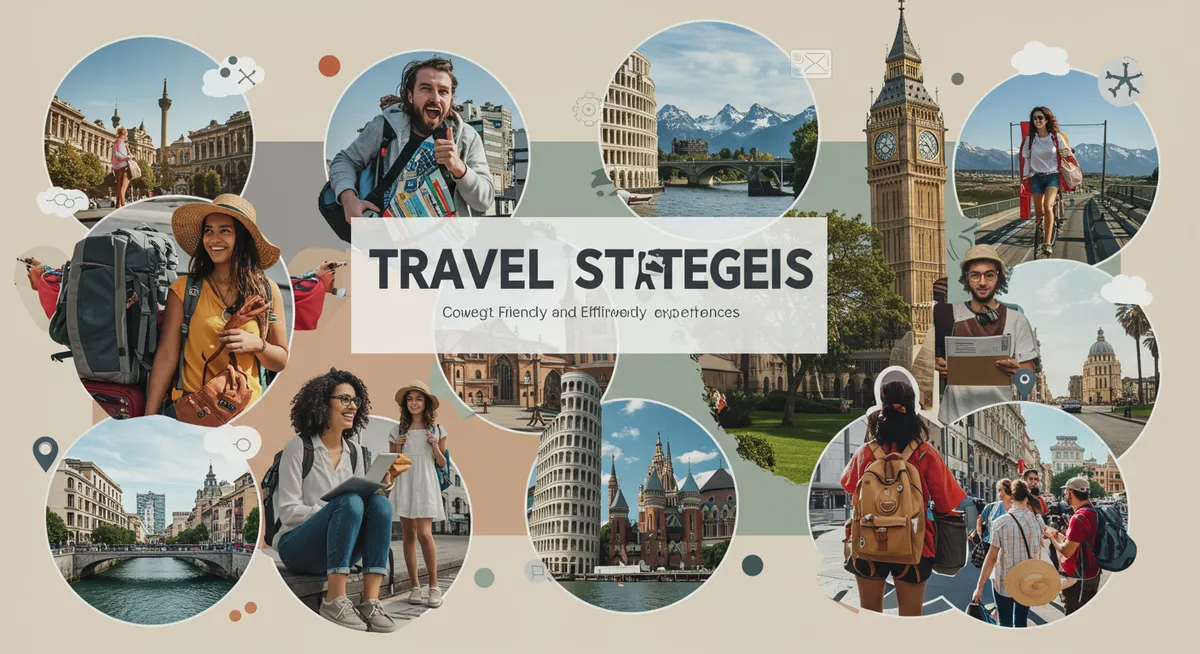
Top-Rated Travel Strategies: 6 Genius Hacks Frequent Travelers Swear By
Table of Contents
Want to find the best travel deals for this destination? Chat with our travel hacking specialist!
Get Travel HacksCategory: top-rated-travel-strategies
Top-Rated Travel Strategies: 6 Genius Hacks That Savvy Travelers Swear By
In the ever-evolving world of travel, certain strategies stand out for their exceptional effectiveness. These aren't just ordinary travel tips—they're game-changing approaches that can transform your travel experience while saving you significant money. Our community of seasoned travelers has tested countless techniques, and these six have consistently delivered the most impressive results. From securing dramatically lower airfares to enjoying luxury accommodations at budget prices, these proven strategies represent the pinnacle of travel intelligence.
Each of these top-rated travel strategies has been thoroughly vetted and refined through real-world application. They work because they leverage specific industry practices, consumer protection laws, or technological advantages that most travelers overlook. By adding these powerful techniques to your travel arsenal, you'll join the ranks of savvy travelers who consistently enjoy more rewarding journeys for less.
1. The 24-Hour Flight Price Lock Strategy
The airline industry's pricing algorithms constantly adjust fares based on demand, competition, and timing—sometimes changing prices multiple times per day. This volatility makes finding the absolute best deal challenging, but a little-known Department of Transportation regulation provides a powerful advantage to informed travelers.
How It Works
U.S. Department of Transportation regulations require airlines to hold a reservation at the quoted fare for 24 hours without payment or allow a purchased reservation to be canceled within 24 hours without penalty. This regulation applies to all airlines that market flights to U.S. consumers if the reservation is made at least seven days before departure.
This creates a unique opportunity to lock in a price while continuing to search for better deals. When you find a reasonable fare, book it directly with the airline (third-party bookings sometimes have different policies). Then, continue monitoring prices over the next 24 hours. If prices drop or you find a better itinerary, simply cancel your original booking without penalty and book the new option.
Expert Implementation Tips
- Use fare alerts: Set up alerts on Google Flights, Skyscanner, or Hopper to notify you of price drops during your 24-hour window
- Check competitor airlines: Sometimes other carriers will match or beat prices when they see bookings increasing on a particular route
- Book directly with airlines: While third-party sites might offer similar prices, booking directly ensures you're covered by the 24-hour rule
- Use multiple devices: Search across different browsers, devices, and in incognito mode to see if different prices are displayed
- Set a cancellation reminder: Don't forget to cancel within the exact timeframe if you find a better deal
"Using the 24-hour rule saved me $340 on flights to Japan. I booked what I thought was a good fare, but prices unexpectedly dropped significantly overnight. I was able to cancel and rebook without any penalty." — Michael S., Chicago
Real Savings Potential
This strategy regularly saves travelers between $50-300 per booking, particularly on international or premium cabin bookings where price volatility is highest. The beauty of this approach is that it offers a risk-free way to secure reasonable fares while maintaining the flexibility to take advantage of unexpected price drops.
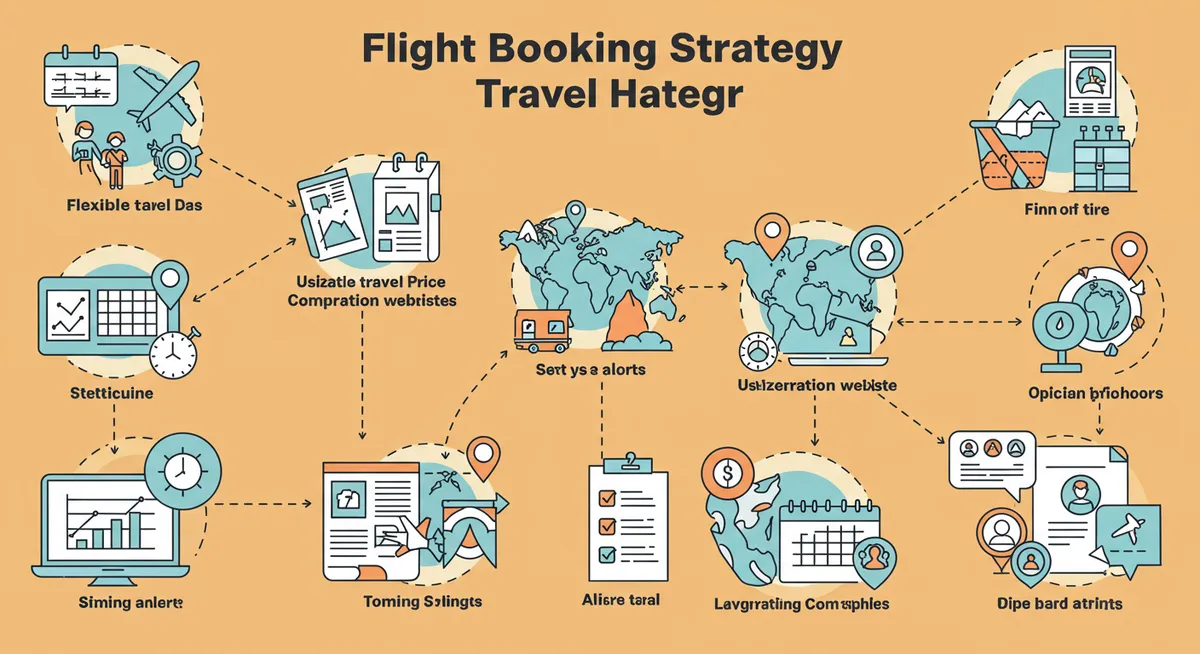
2. The Hotel Room Upgrade Email Template
Hotels operate with constantly fluctuating inventory and a strong desire to maximize customer satisfaction, especially for guests who engage directly with them. This creates a perfect opportunity to secure complimentary room upgrades using a carefully crafted email approach.
How It Works
Three days before your arrival, send a personalized email directly to the hotel with a specific template that incorporates psychological principles that hotel managers respond favorably to. This timing is crucial—it's close enough to your arrival that the hotel has a good understanding of their occupancy, but not so last-minute that all premium rooms have been assigned.
The email should express genuine excitement about your stay, mention any special occasion (if applicable), demonstrate loyalty to the brand or research about the property, and make a subtle, non-demanding inquiry about possible upgrades. This approach positions you as a valued guest worth impressing rather than someone simply fishing for freebies.
The Proven Email Template
Subject Line: Looking Forward to Our Stay [Reservation #12345] Dear [Hotel Name] Team, My [partner/family/etc.] and I are excited about our upcoming stay at your property from [dates]. I've heard wonderful things about your [specific feature of the hotel you're genuinely interested in], and we're particularly looking forward to experiencing [specific amenity or aspect of the hotel]. [Optional: Include a brief mention of occasion, e.g., "We're celebrating our anniversary" or "This is our first visit to (destination)"] I noticed from your website that you have several room categories, and they all look lovely. I wanted to inquire if there might be any possibility of a complimentary upgrade available for our stay? We'd be particularly appreciative of any enhancements that might make our visit even more special. Regardless, we're very much looking forward to experiencing your hospitality. Thank you for your consideration, [Your Name] [Loyalty Program Status and Number, if applicable] Reservation #: [number]
Expert Implementation Tips
- Personalize thoroughly: Reference specific details about the property to show you've done your research
- Timing matters: Send your email exactly 72 hours (3 days) before check-in for optimal results
- Be polite but direct: Don't apologize for asking or use overly humble language
- Mention loyalty status: If you're part of the hotel's loyalty program, always include this information
- Follow up at check-in: Casually mention your email when you arrive, which reinforces your request
"I've used this email template at over 15 hotels with a success rate of about 70%. My most memorable upgrade was in Barcelona, where we were moved from a standard room to a junior suite with a private terrace. The difference in room rate would have been €180 per night!" — Emma L., London
Real Savings Potential
This strategy typically delivers room upgrades worth $50-150 per night, with occasionally spectacular results like upgrades to suites or rooms with premium views or amenities. The approach works with hotels of all categories, from boutique properties to international luxury chains, with slightly higher success rates at 4-5 star properties where more upgrade inventory is available.
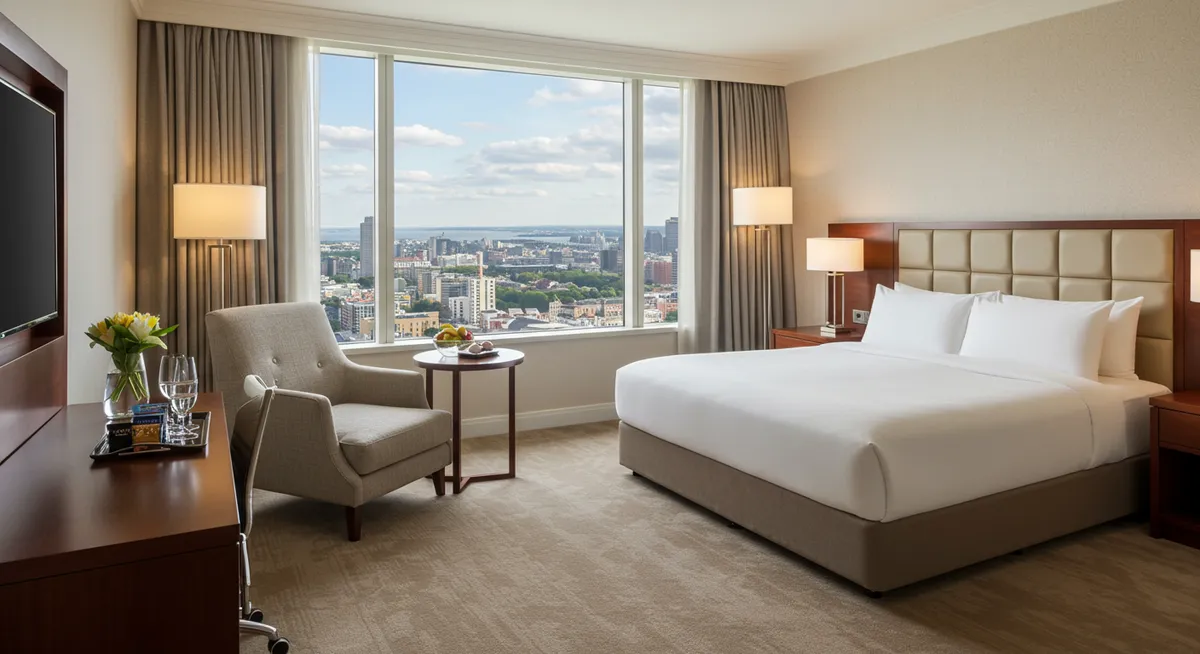
3. AI Flight Price Prediction Tool Strategy
Airfare pricing follows complex patterns influenced by numerous factors including seasonal demand, competition, fuel prices, and historical booking data. While these patterns are too intricate for most travelers to decipher, advanced machine learning algorithms can now analyze millions of data points to predict price movements with remarkable accuracy.
How It Works
Flight price prediction tools use artificial intelligence to analyze historical pricing data, search trends, seat availability, and seasonal patterns to forecast whether prices for specific routes are likely to rise or fall in the coming days and weeks. These predictions provide actionable intelligence about the optimal time to book your flights.
The most effective approach is to begin monitoring prices approximately 3-4 months before your intended travel dates. Enter your desired route into prediction tools like Google Flights, Hopper, or Kayak, which will provide guidance on whether to book immediately or wait for anticipated price drops. These platforms will send alerts when they detect that prices are unlikely to decrease further, signaling the optimal moment to book.
Expert Implementation Tips
- Start early: Begin tracking flights 3-4 months before your travel dates to establish a baseline price
- Use multiple tools: Compare predictions across Google Flights, Hopper, and Kayak for greater confidence
- Consider fare flexibility: Sometimes slightly higher fares with greater flexibility are worth the premium
- Look for confidence ratings: Focus on predictions with high confidence percentages (80%+)
- Set price targets: Decide in advance what price would trigger an immediate purchase
"I was planning a family trip to Europe and started tracking flights through a prediction tool. It advised waiting despite my anxiety about rising prices. Sure enough, three weeks later prices dropped by $220 per ticket—saving our family of four $880 total!" — David K., Austin
Real Savings Potential
This data-driven approach typically saves travelers 15-25% on flight costs, with particularly strong results for international and flexible travel dates. The greatest savings occur on routes with high competition and for leisure travel where booking windows are longer. Business travelers with less flexibility see more modest but still worthwhile savings of 8-15% on average.
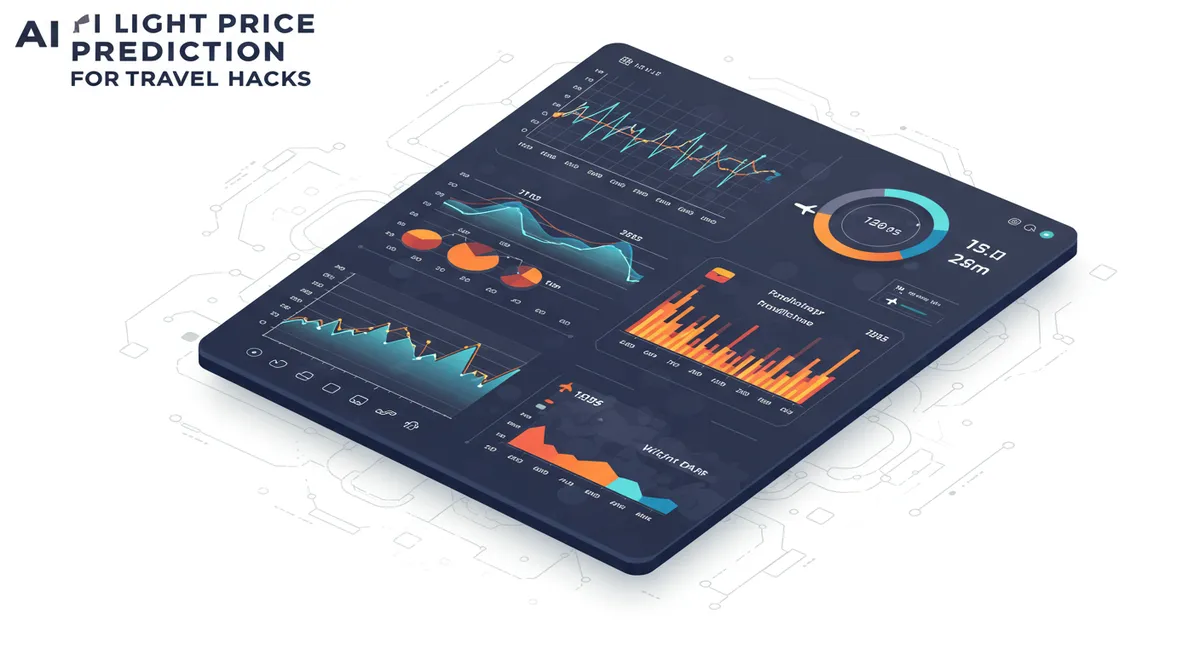
4. The 3-2-1 Packing Cube System
Efficient packing is about more than just fitting everything into your luggage—it's about organization, accessibility, and maximizing available space. The revolutionary 3-2-1 packing cube system transforms how experienced travelers approach luggage organization, allowing them to pack more items while maintaining order throughout their journey.
How It Works
The 3-2-1 system uses compression packing cubes of different sizes to categorize, compress, and organize your belongings in a methodical way that maximizes space efficiency. The number system refers to:
- 3 small cubes: For underwear, socks, accessories, charging cables, and other small items
- 2 medium cubes: For shirts, tops, and lightweight bottoms that can be rolled tightly
- 1 large cube: For bulkier items like jeans, sweaters, and dresses
Each cube compresses your clothing to reduce volume while keeping items neatly organized. The system works by rolling (not folding) clothes tightly before placing them in the appropriate cube. Once filled, the compression mechanism reduces the volume by 20-30%, allowing you to fit substantially more in your luggage.
Expert Implementation Tips
- Color-code by category: Use different colored cubes for different types of clothing
- Roll, don't fold: Rolling clothes before placing them in cubes maximizes space efficiency
- Create outfit sets: Pack complementary items together in medium cubes for grab-and-go outfit selection
- Use the "ranger roll" technique: This military-style rolling method locks clothes into tight cylinders
- Pack cubes at 90% capacity: Slightly underfilling allows maximum compression
"The 3-2-1 packing cube system completely revolutionized how I travel. I went from checking a bag on every trip to fitting everything I need for a two-week vacation in a carry-on. Not only do I save on checked bag fees, but I also save time at the airport and never worry about lost luggage." — Sarah T., Seattle
Real Savings Potential
This system routinely enables travelers to switch from checked luggage to carry-on only, saving $30-60 per flight leg in baggage fees. For a typical round-trip with connections, this can mean $60-120 in direct savings. Beyond monetary benefits, the time saved by avoiding baggage claim areas and eliminating the risk of lost luggage adds significant value to the travel experience.
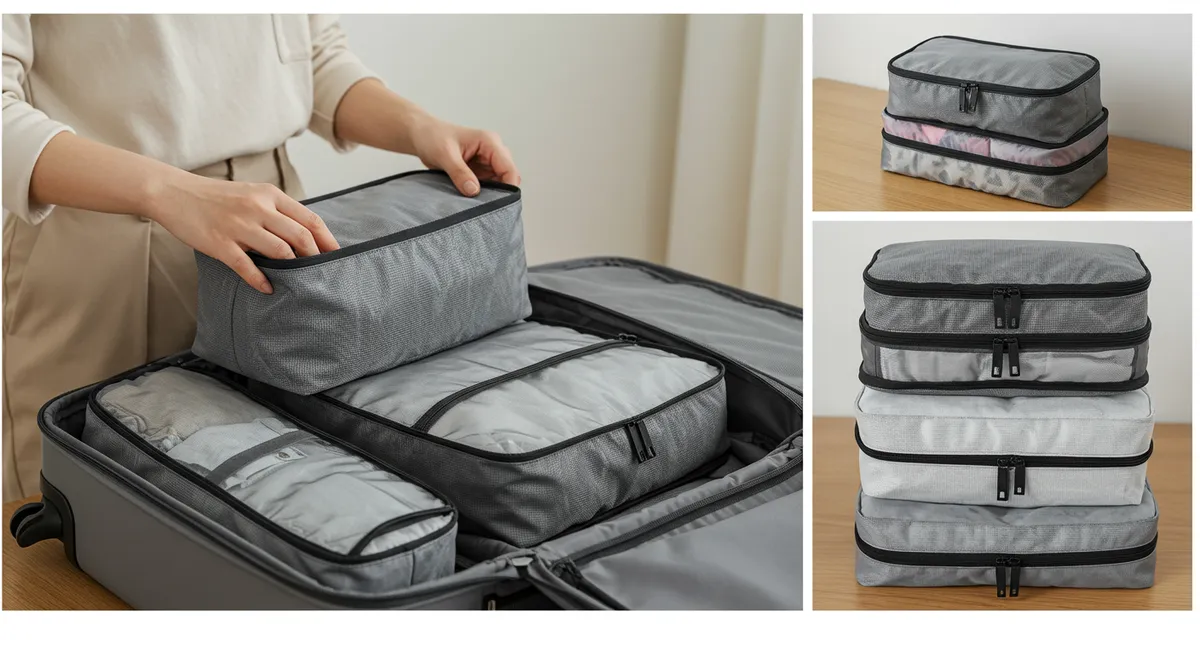
5. The Travel Credit Card Points Strategy
Strategic use of travel rewards credit cards represents one of the most powerful approaches to dramatically reducing travel costs. While many travelers have rewards cards, few implement a systematic approach that maximizes point accrual and strategic redemption for outsized value.
How It Works
This strategy involves selectively applying for and using travel rewards credit cards that offer substantial sign-up bonuses and category spending multipliers. By systematically channeling everyday spending through these cards and taking advantage of bonus categories, transfer partners, and redemption sweet spots, travelers can accumulate enough points for nearly-free flights and hotel stays.
The approach has three core components: point accumulation through strategic spending and sign-up bonuses, point amplification through category bonuses and promotions, and value maximization through optimal redemption paths. When properly executed, this system can reduce travel costs by 70-90% while potentially enabling experiences that would otherwise be financially out of reach.
Expert Implementation Tips
- Focus on transferable points: Cards that earn points transferable to multiple airlines and hotels offer maximum flexibility
- Create a card portfolio: Combine 2-3 complementary cards that cover different spending categories
- Track bonus categories: Use apps like MaxRewards to ensure you're using the optimal card for each purchase
- Time applications strategically: Apply when sign-up bonuses reach historical highs
- Look for redemption sweet spots: Certain transfer partners offer exceptionally high value for specific routes or hotels
"I implemented this strategy for just one year, focusing on two premium travel cards. By maximizing category bonuses and sign-up offers, I earned enough points for round-trip business class tickets to Japan worth $4,600. My out-of-pocket cost was just the annual fees totaling $550—saving me over $4,000 on a dream trip I otherwise couldn't have afforded." — James W., Denver
Real Savings Potential
Conservative implementation of this strategy typically yields $1,000-2,000 in travel value annually, with more aggressive approaches generating $3,000-5,000+ in value. The strategy works particularly well for international premium cabin flights and luxury hotel stays, where points redemptions often deliver 2-5 cents per point in value compared to cash prices.

6. The Hidden Destination Alternative Finder
Popular destinations often come with premium price tags due to high demand. However, lesser-known alternatives frequently offer similar or even superior experiences at a fraction of the cost. This strategy involves identifying these alternative destinations that match your desired travel experience while dramatically reducing expenses.
How It Works
The approach uses comparative analysis to identify destinations with similar attractions, climate, and cultural experiences to popular hotspots, but without the crowds and inflated prices. These "hidden gem" alternatives typically offer cost savings of 30-50% on accommodations, dining, and activities while providing more authentic experiences and interactions with locals.
The process involves determining which specific elements you value most about your dream destination (beaches, historical sites, cuisine, architecture, etc.), then researching alternatives that offer these same attributes but remain under the mainstream tourism radar. Tools like Google Earth, destination comparison platforms, and travel forums where locals and experienced travelers share insights are invaluable for this research.
Expert Implementation Tips
- Focus on geographic proximity: Look for alternatives in the same region as popular destinations
- Research emerging destinations: Places that are starting to gain attention often offer the best value before becoming mainstream
- Consider transportation options: Ensure your alternative is reasonably accessible with adequate local transportation
- Verify safety profiles: Check government travel advisories and recent visitor accounts
- Look for infrastructure development: Recent tourism investment often signals an up-and-coming destination
"Instead of joining the crowds in Santorini with $400/night basic hotels, we discovered Milos in the Greek islands. We enjoyed the same stunning Aegean views and white-washed villages, but paid just $120/night for a beautiful apartment. The beaches were actually better, the food was more authentic, and we saved over $2,000 on our 7-day trip." — Rebecca L., Boston
Real Savings Potential
This approach consistently delivers 30-50% savings on overall trip costs compared to visiting high-demand destinations. Beyond the financial benefits, travelers often report higher satisfaction with these alternative experiences due to fewer crowds, more authentic cultural interactions, and the joy of discovery. This strategy is particularly effective for beach destinations, European cities, and Asian cultural hotspots.
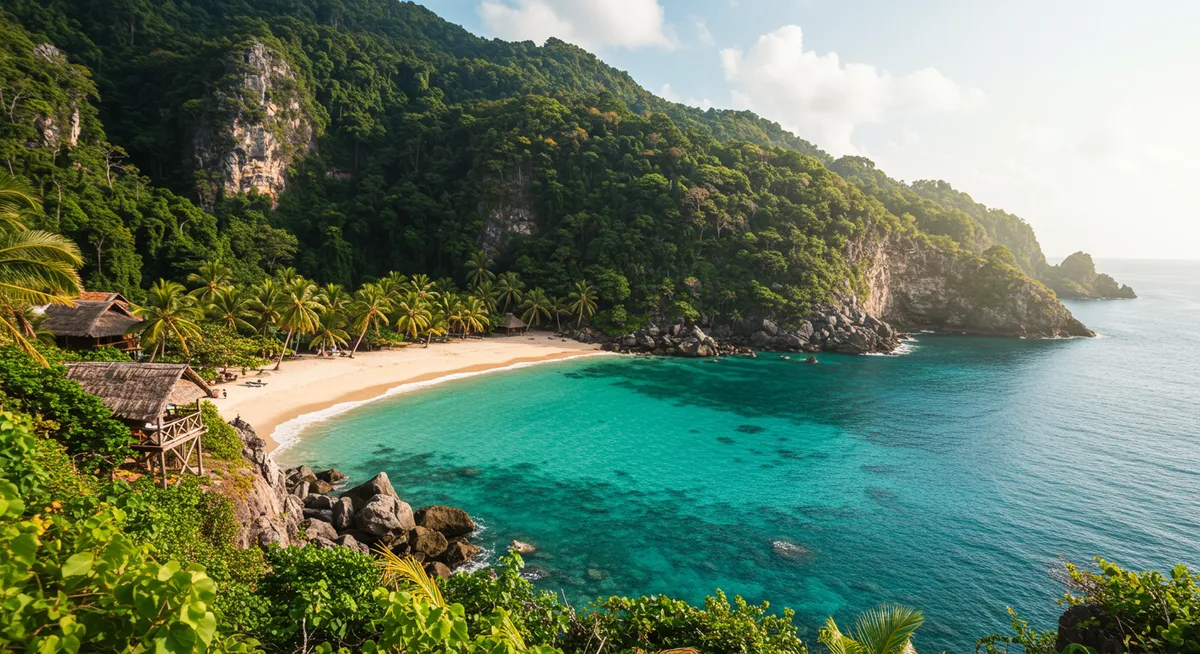
Combining These Top-Rated Strategies for Maximum Impact
While each of these six strategies delivers impressive results individually, their power compounds when used together as part of a comprehensive approach to travel planning. By implementing multiple strategies for a single trip, you can dramatically transform your travel experience while reducing costs by 50% or more compared to conventional approaches.
Consider how these strategies work together throughout the travel planning lifecycle:
- Start by identifying a hidden destination alternative that matches your travel preferences
- Use AI price prediction tools to monitor flight prices to your chosen destination
- When the optimal booking time arrives, utilize the 24-hour flight price lock strategy
- Book accommodations with credit cards that maximize travel rewards points
- Send the hotel upgrade email template three days before arrival
- Pack efficiently using the 3-2-1 compression cube system to avoid checked bag fees
This integrated approach represents the pinnacle of travel optimization, allowing you to experience more enriching travel while spending less. The strategies work harmoniously to address every major aspect of travel planning and execution, from destination selection to on-the-ground logistics.
Frequently Asked Questions About Top-Rated Travel Strategies
Do these travel strategies work for international travel or just domestic trips?
These strategies work for both domestic and international travel, but many deliver even greater value for international trips. The 24-hour flight price lock strategy and AI price prediction tools typically yield higher absolute savings on international flights due to their higher base prices. The hotel upgrade email template works worldwide, with particularly strong results in regions where service culture emphasizes guest satisfaction, such as Southeast Asia and the Middle East. The credit card points strategy delivers exceptional value for international premium cabin flights, where points redemptions often offer 3-5 cents per point in value. Only the hidden destination alternative strategy varies significantly by region, as it depends on local tourism patterns and infrastructure development.
Are these strategies ethical and legal for travelers to use?
All six strategies are both ethical and legal when implemented as described. The 24-hour flight price lock strategy leverages a consumer protection regulation specifically designed to help travelers. The hotel upgrade email template represents a straightforward request that hotels are free to accept or decline based on availability. AI price prediction tools use publicly available data to make forecasts. The packing cube system simply optimizes your own luggage organization. The credit card points strategy involves following the explicit terms and conditions of rewards programs. The hidden destination alternative approach supports economic development in emerging tourism areas. None of these strategies involve deception, manipulation of systems, or violation of terms of service. They represent savvy consumer behavior that makes optimal use of existing travel industry structures and offerings.
How much time do I need to implement these travel strategies effectively?
The time investment varies by strategy but is generally modest compared to the potential savings. The AI price prediction approach requires the most lead time—ideally beginning 3-4 months before travel—but demands just 10-15 minutes to set up price alerts and then occasional check-ins. The hotel upgrade email template takes approximately 15-20 minutes to personalize and send. The 24-hour flight price lock strategy requires monitoring prices within a specific 24-hour window. The credit card points strategy involves initial research (2-3 hours) but then integrates into your regular spending habits. The hidden destination alternative finder requires the most research (3-5 hours) but delivers proportionally large savings. The packing cube system requires a one-time purchase of equipment and 30 minutes to learn, but then saves time on every trip thereafter. Most travelers find that the time investment is minimal compared to both the financial savings and the enhanced travel experiences these strategies enable.
Do these strategies work for luxury travel or only budget travel?
These strategies are particularly effective for luxury travel, often delivering even greater absolute savings than for budget travel. The hotel upgrade email template shows the highest success rates at 4-5 star properties where upgrade inventory is more varied. The credit card points strategy enables access to business and first-class flights and luxury hotels that might otherwise be financially inaccessible. The hidden destination alternative approach often leads to discovering luxury properties in emerging locations that offer 5-star experiences at 3-star prices. Even the packing cube system benefits luxury travelers by allowing them to pack more high-quality wardrobe options. While budget travelers certainly benefit from these strategies as well, luxury travelers often see the most dramatic value enhancement, with potential savings of thousands of dollars per trip while actually upgrading the travel experience.
Which of these strategies would be most beneficial for family travel?
For family travel, the hidden destination alternative finder and the 3-2-1 packing cube system typically deliver the greatest benefits. Families traveling with children benefit enormously from discovering less crowded, more authentic destinations where activities and accommodations cost significantly less than in tourist hotspots. With multiple family members, these savings multiply across every aspect of the trip. The packing cube system is transformative for family travel, allowing each family member to have their own designated cubes and dramatically reducing the number of bags required. The 24-hour flight price lock strategy is also particularly valuable for families, as securing the best possible fare multiplied across 3-5+ people can result in substantial savings. For longer-term planning, the credit card points strategy can enable families to access premium travel experiences that would otherwise be prohibitively expensive, such as larger hotel rooms or adjacent seats on flights.
How often are these strategies updated to remain effective?
These top-rated travel strategies undergo continuous refinement based on user feedback, industry changes, and emerging technologies. The core principles behind each strategy remain consistent, but the specific implementation details evolve. For example, the hotel upgrade email template is periodically updated based on changing industry response patterns and language effectiveness. The AI price prediction approach continuously improves as algorithms gain access to more historical data and machine learning capabilities advance. The credit card points strategy receives the most frequent updates as credit card offerings, transfer partners, and redemption opportunities change regularly. We conduct quarterly reviews of each strategy's effectiveness using data from our community of travelers and make adjustments as necessary. Users can be confident that these approaches represent current best practices rather than outdated techniques. The fundamental principles underlying these strategies—consumer psychology, industry operational patterns, and value optimization—ensure their continued relevance even as specific details evolve.
These six top-rated travel strategies represent the pinnacle of travel optimization, combining insider knowledge with practical techniques that deliver measurable results. By implementing even a few of these approaches, you'll join a community of savvy travelers who consistently enjoy superior travel experiences at lower costs. Each strategy builds upon fundamental principles of how the travel industry operates, allowing you to work within existing systems to maximize value without compromising quality.
As you prepare for your next journey, consider which of these strategies aligns best with your travel style and priorities. Even implementing just one or two can significantly enhance your experience and reduce costs. Over time, as you gain confidence and experience with these techniques, you can layer additional strategies to create a comprehensive approach to smarter travel. The journey to becoming a truly savvy traveler begins with these proven, top-rated strategies that have already transformed countless travel experiences around the world.
Explore Our Complete Travel Strategy Collection
Beyond these six top-rated strategies, our travel experts have developed comprehensive guides for every aspect of travel. Explore our full collection to maximize your travel experience:
Top-Rated Strategy Guides
- 24-Hour Flight Price Lock Strategy - Save up to $300 on airfare bookings
- Hotel Room Upgrade Email Template - Get free hotel upgrades worth $50-150 per night
- AI Flight Price Prediction Tool - Use AI to save 23% on average for flights
- 3-2-1 Packing Cube System - Maximize luggage space by 42%
- Travel Credit Card Points Strategy - Fund premium travel experiences
- Hidden Destination Alternative Finder - Save up to 45% on travel costs
Travel Category Guides
- Flight Hacks - Expert techniques for finding and booking the best flights
- Accommodation Hacks - Secure better stays for less
- Packing Hacks - Pack smarter for stress-free travel
- Airport Hacks - Navigate airports like a seasoned pro
- Money-Saving Hacks - Stretch your travel budget further
- Planning and Booking Hacks - Master the pre-departure phase
Specialized Travel Resources
- Tech and Connectivity Hacks - Stay connected worldwide
- Health and Comfort Hacks - Maintain wellbeing while traveling
- AI Travel Assistant Guide - Leverage AI for smarter travel
- Kinshasa Travel Hacks - Specialized guide for this unique destination
Main Travel Resources
- Ultimate Travel Hacks Guide - Our comprehensive collection of 50 essential travel techniques
- Top-Rated Travel Strategies - The six most powerful travel strategies
- Hacks.Travel Homepage - Discover our latest resources and tools
Related Posts
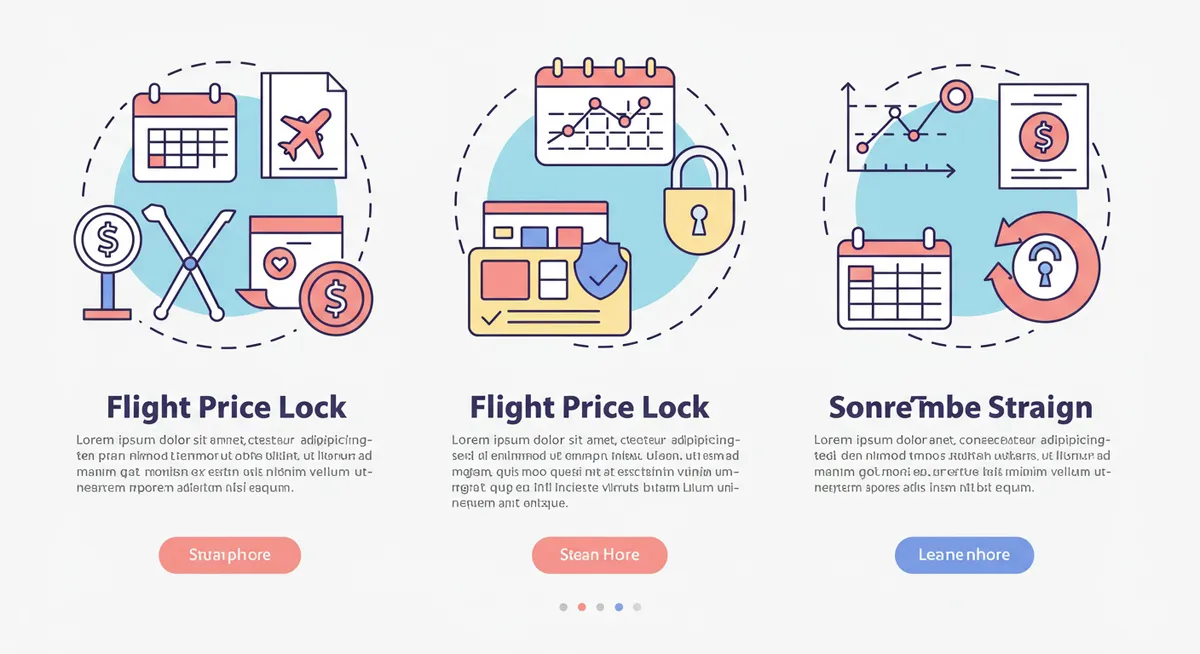
24-Hour Flight Price Lock Strategy: How to Save Hundreds on Airfare
Learn how to use the little-known 24-hour flight price lock rule to secure the best possible airfares and save up to $300 on your next booking.
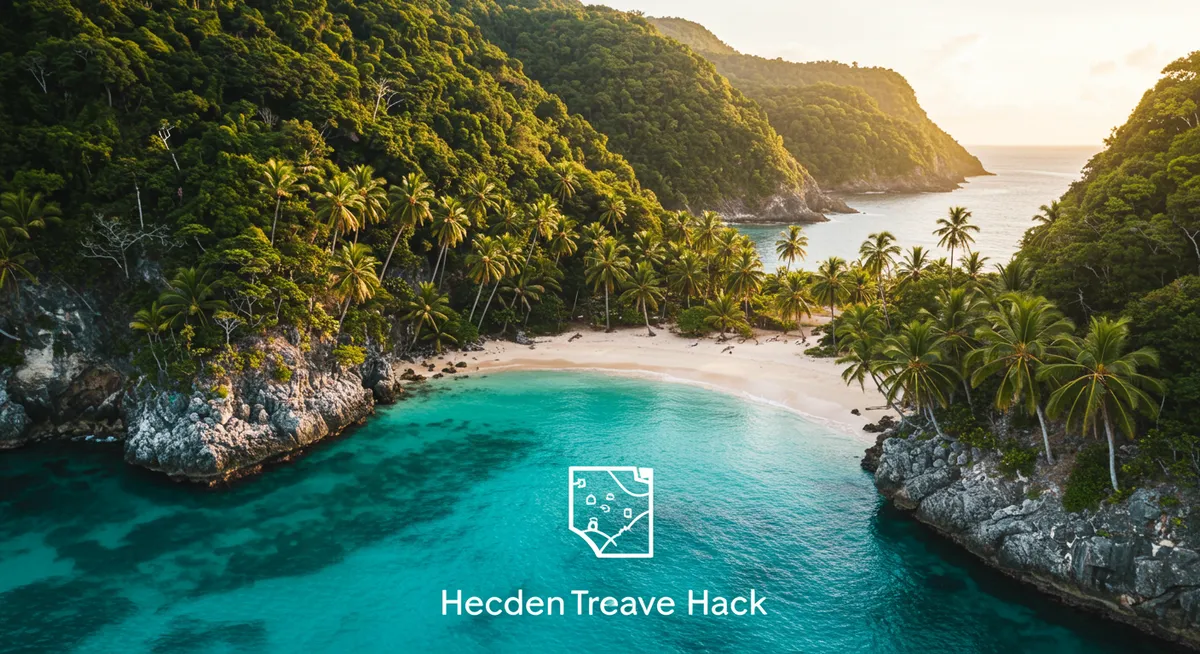
Hidden Destination Alternative Finder: Discover Affordable Luxury Travel Gems
Master the Hidden Destination Alternative strategy to find spectacular yet affordable substitutes for popular tourist destinations, saving up to 45% on travel costs while enjoying more authentic experiences.

Travel Credit Card Points Strategy: The Ultimate Guide to Luxury Travel on a Budget
Master the strategic use of travel credit cards to earn up to 500,000 points annually, redeeming them for $7,000+ in free flights, hotel stays, and VIP perks.